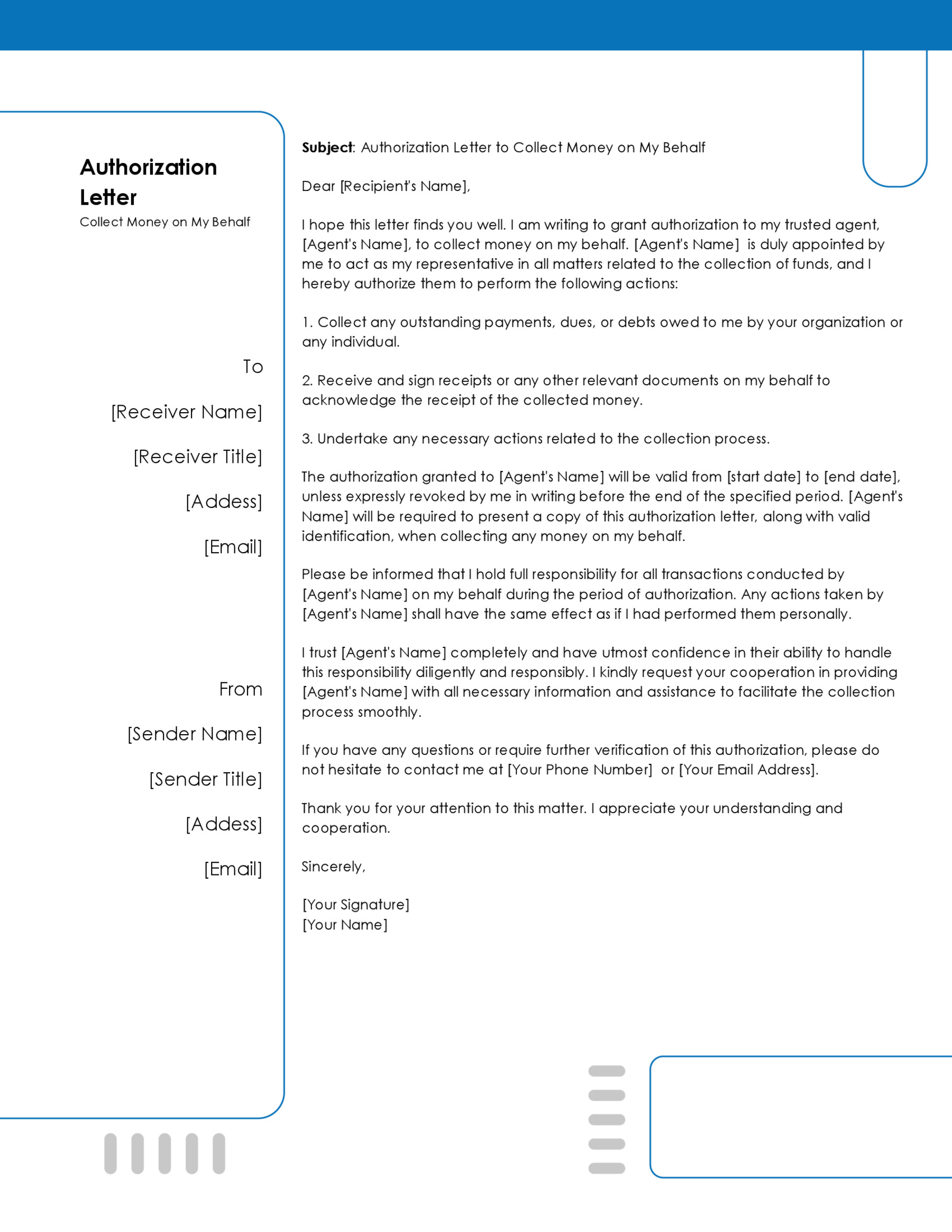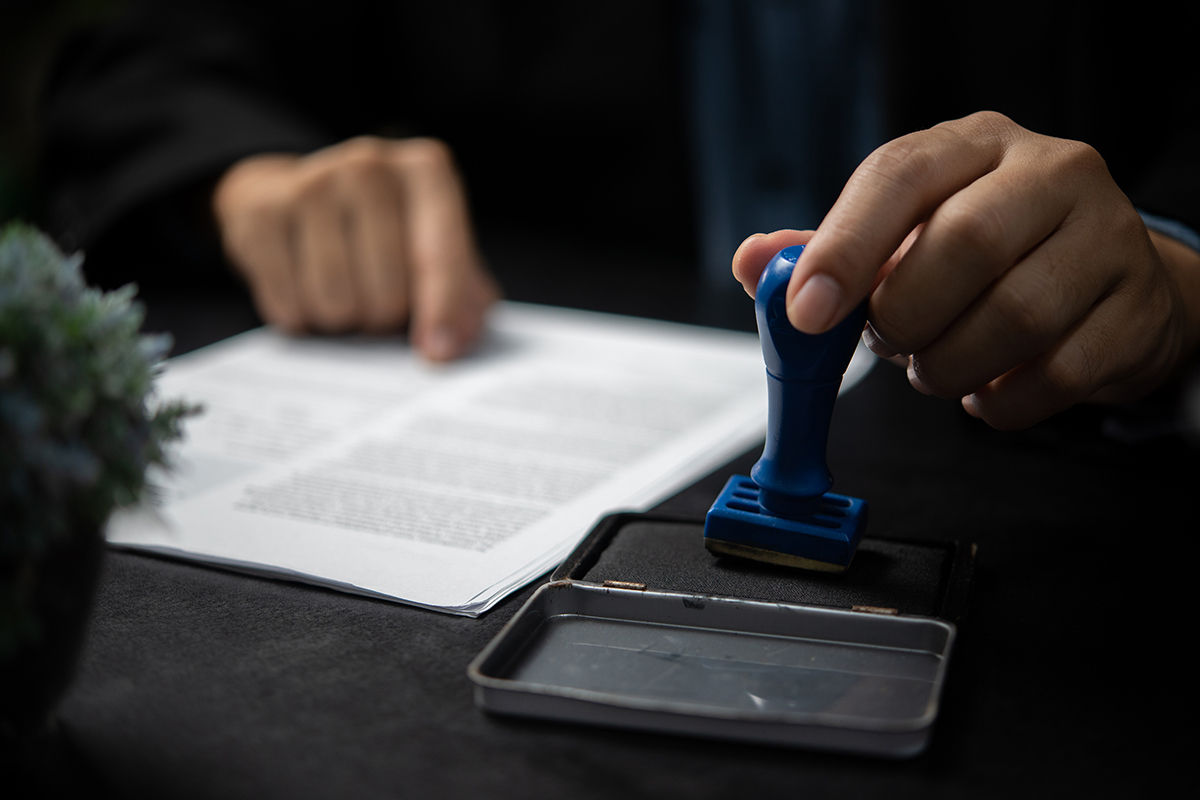In a fast-paced era, entrusting your vehicle to another individual is both a privilege and a necessity. When you find it challenging to manage various tasks related to your vehicle, a vehicle authorization letter can prove beneficial. Whether it’s a family member, relative, or close friend, this letter highlights the significance of delegating responsibilities. By granting authority to another individual or entity to act on your behalf, you can ensure your vehicle is well taken care of, even in your absence. This article will explore the vital role that this letter plays, its essential components, and provide useful tips to consider when drafting it.
What is a Vehicle Authorization Letter?
Commonly referred to as a vehicle power of attorney, a vehicle authorization letter serves as a legally binding document granting a designated individual or entity permission to operate, use, or perform specific actions related to a vehicle on behalf of its owner.
It contains essential details such as vehicle information, scope, duration, and imposed limitations. The letter is usually issued to a third party, such as an insurance firm, repair shop, or prospective buyer, with the primary purpose of validating the identity of the authorized individual. It is commonly used when the owner cannot personally oversee matters concerning the vehicle and needs someone else to do so.
Free Templates
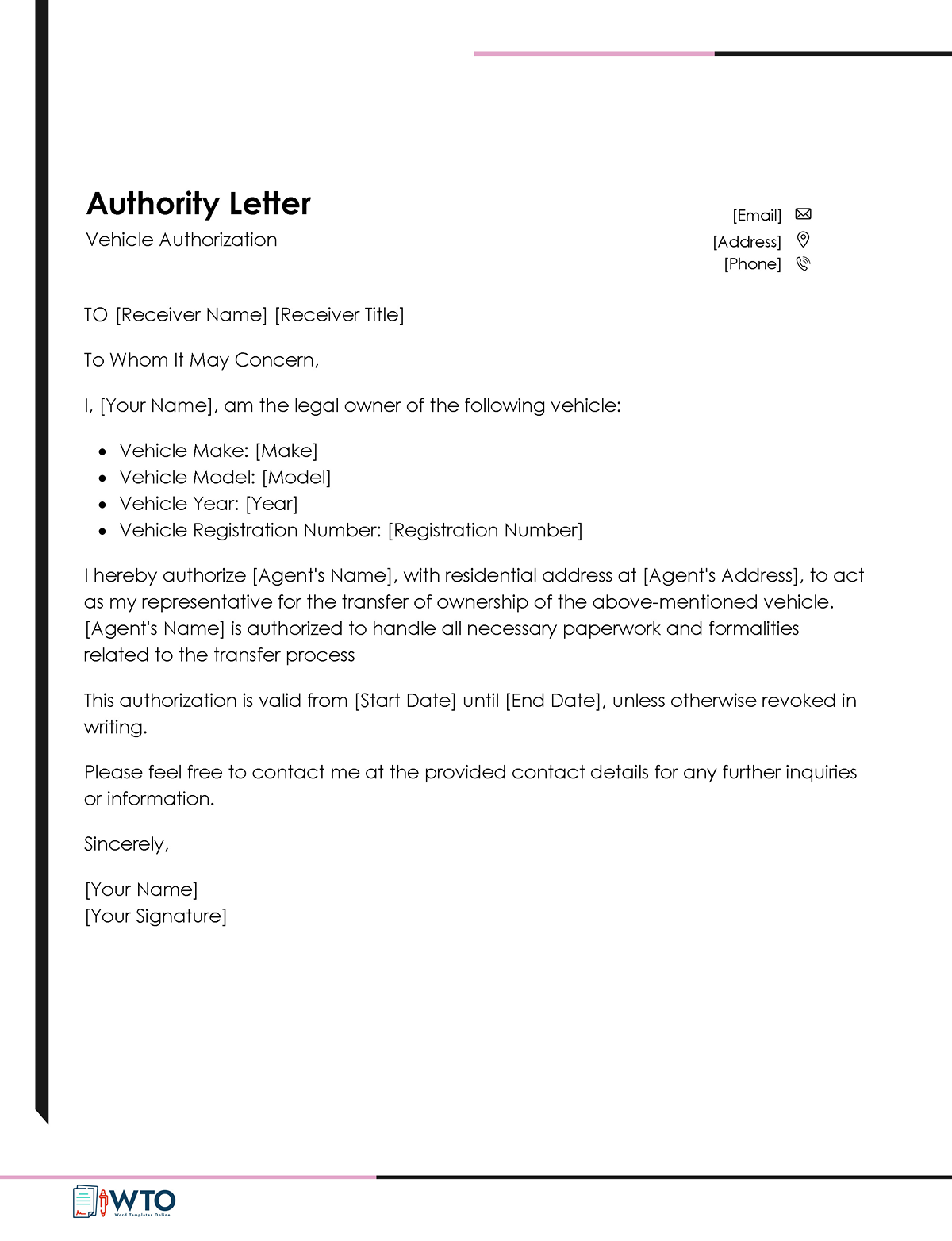

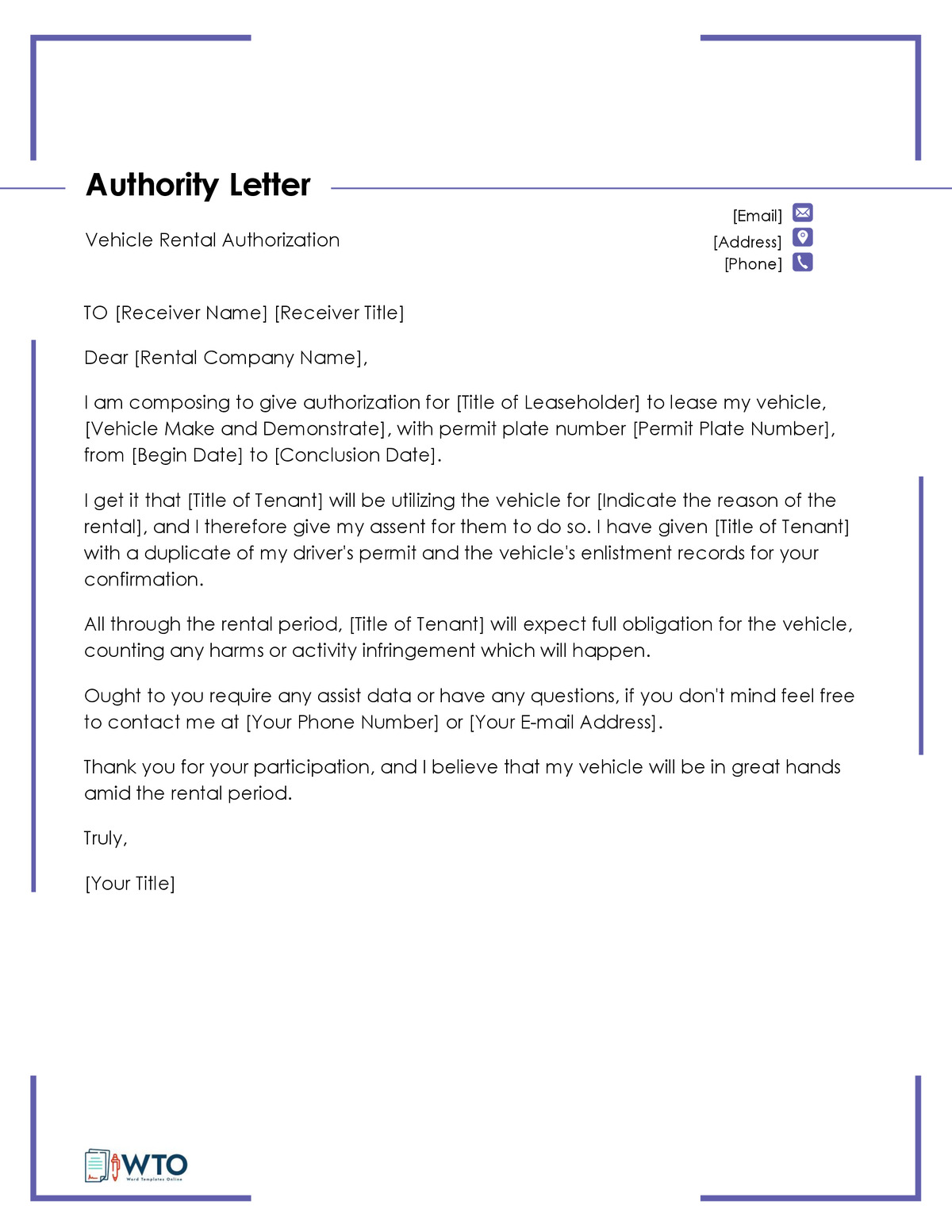
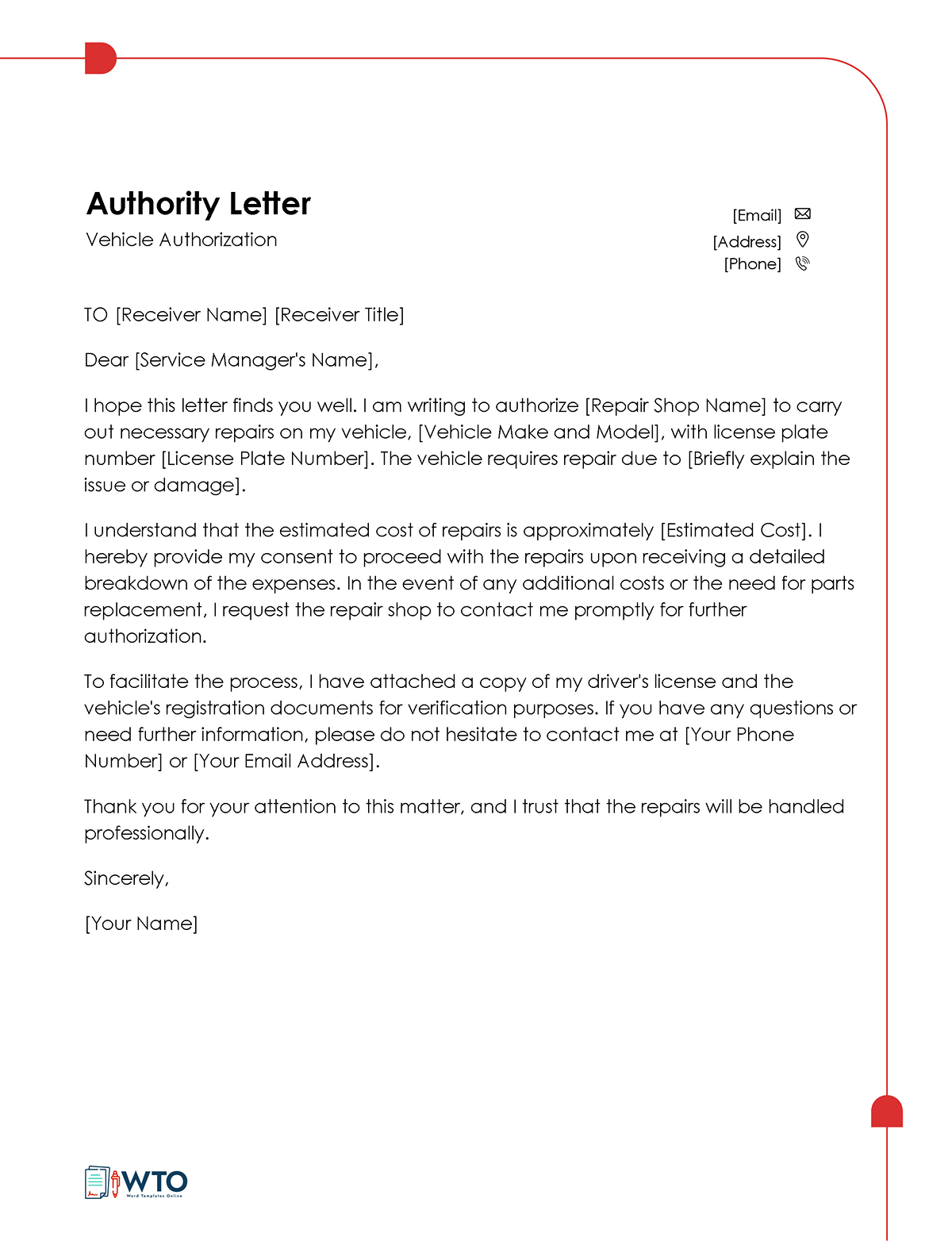
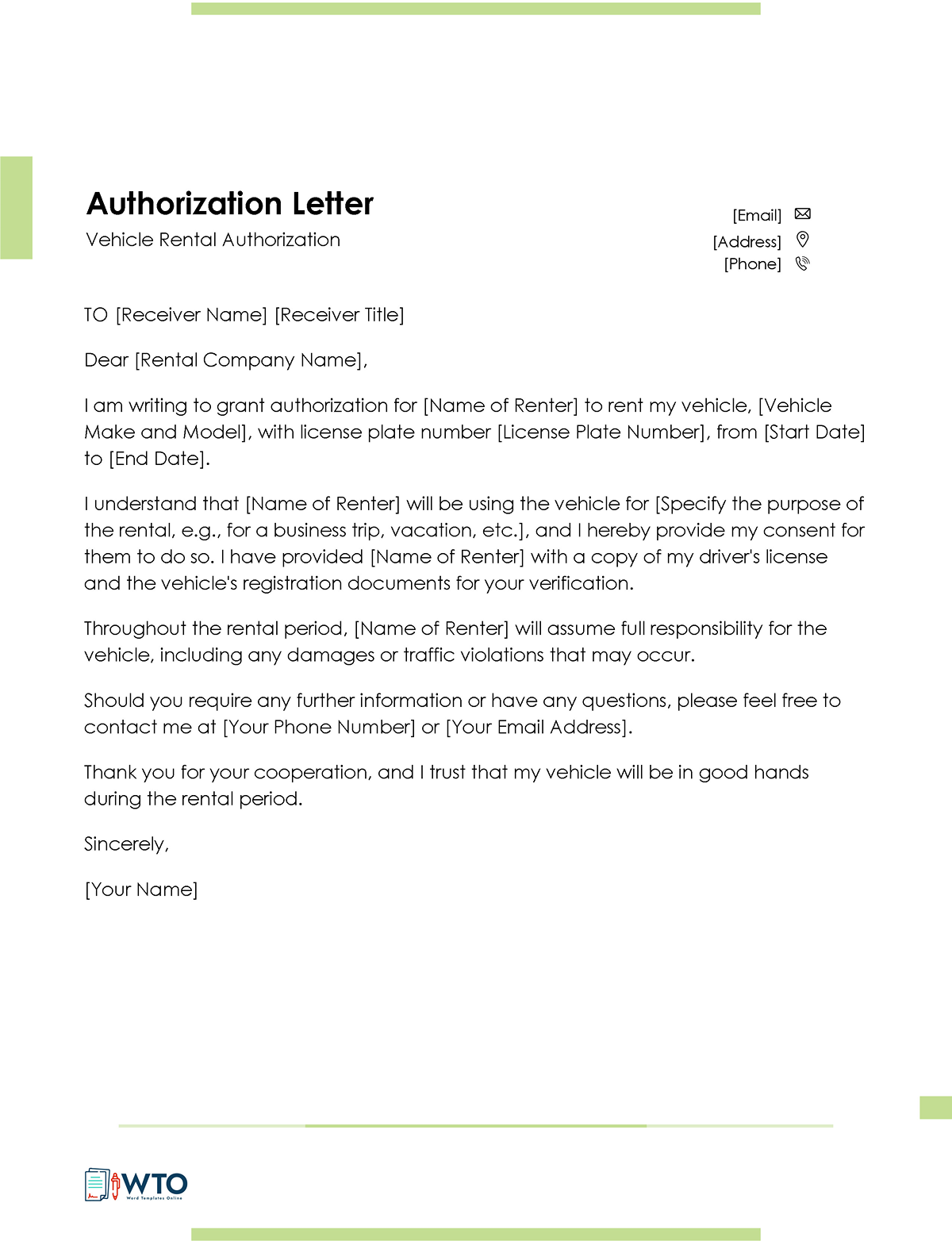
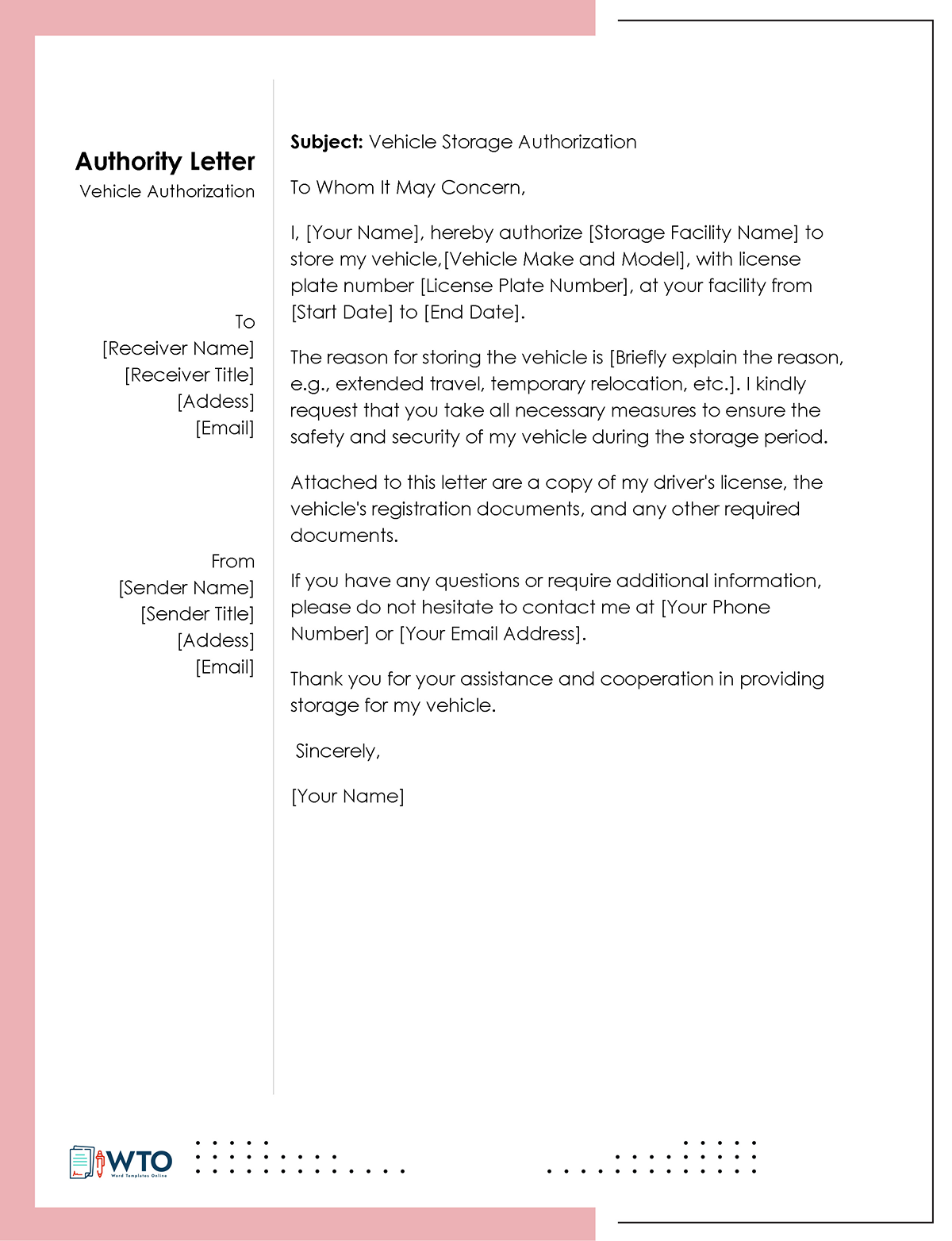
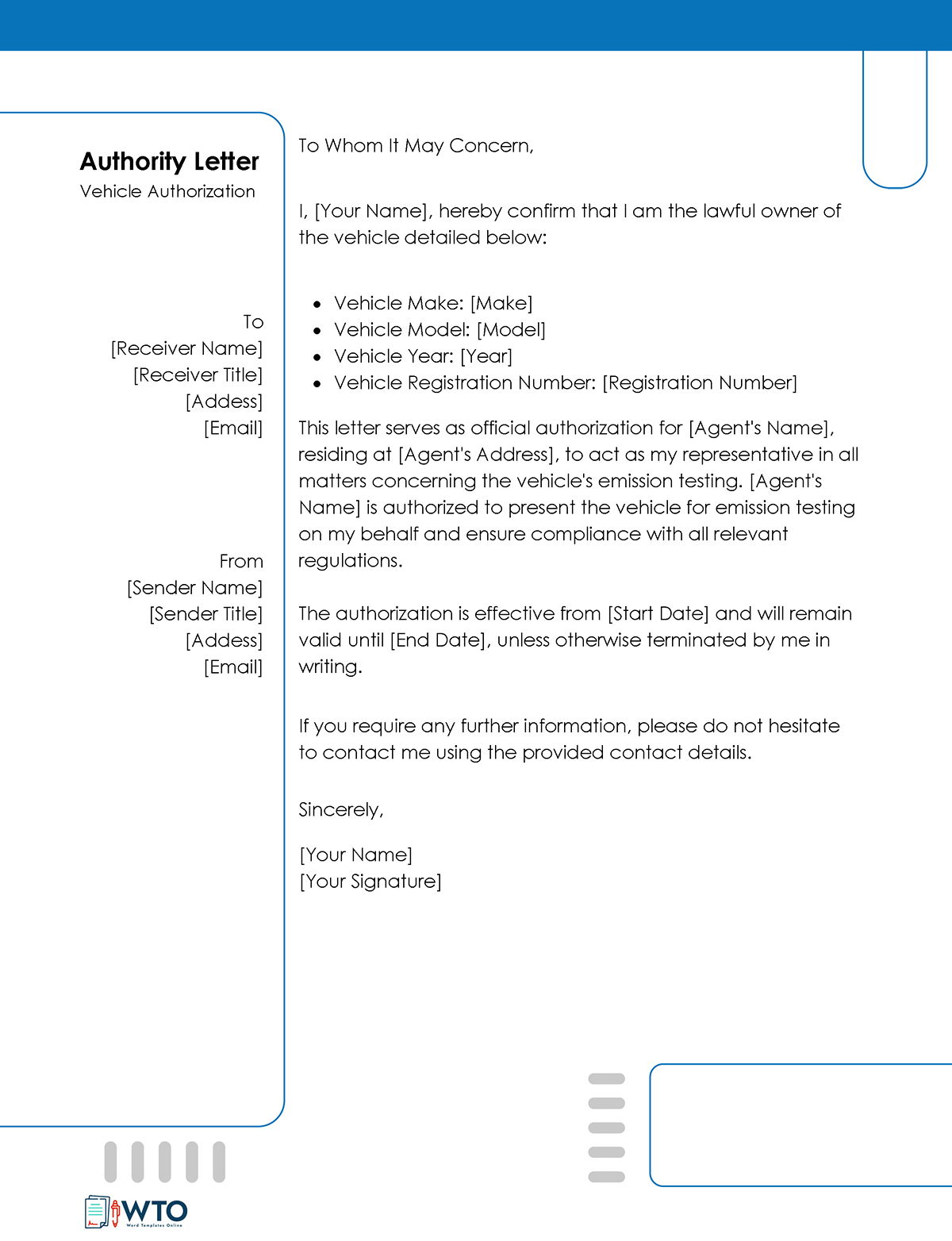
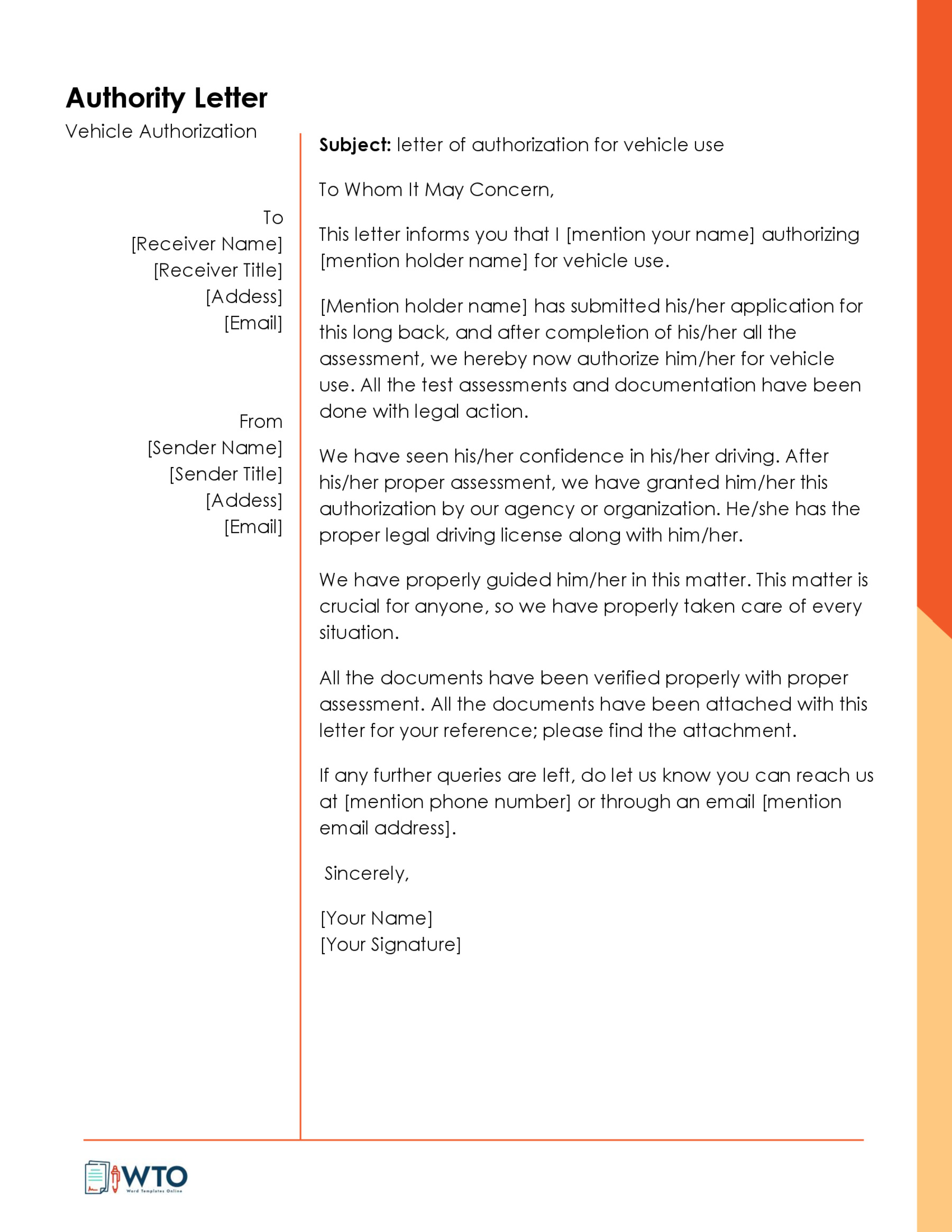
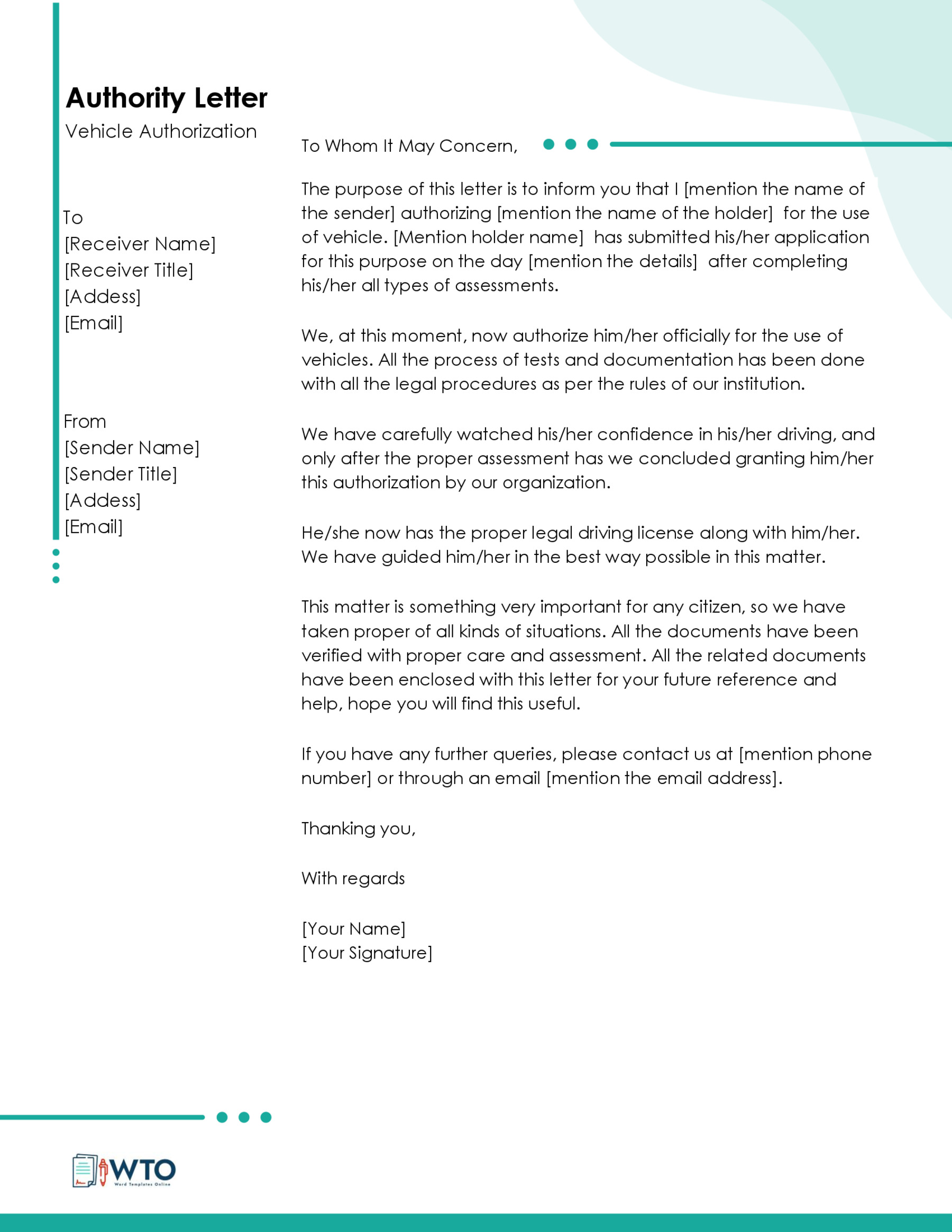
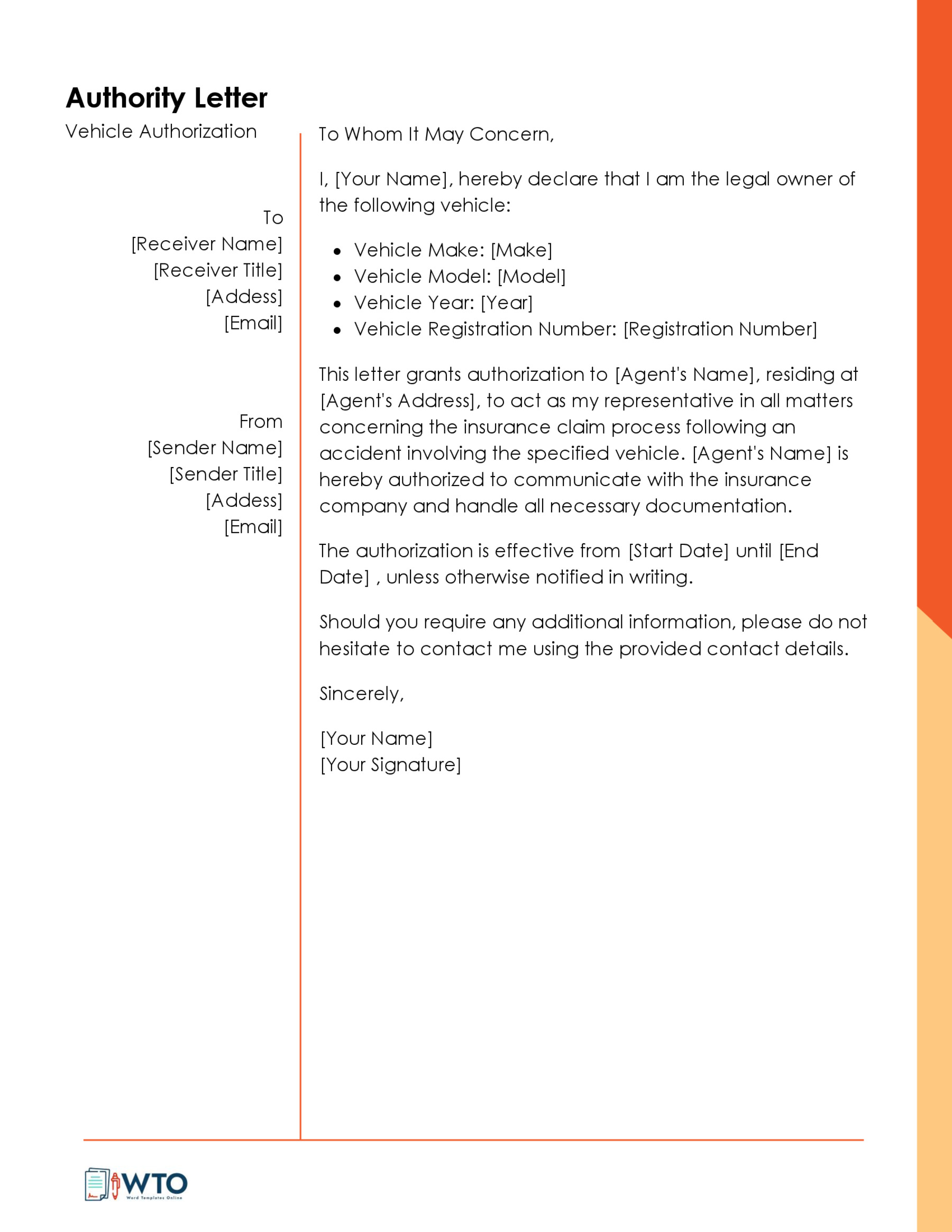


Key Use-Cases for a Vehicle Authorization Letter
A vehicle authorization letter is a versatile document that can be utilized for various purposes. Each case requires a well-drafted letter specifying the authorization’s scope, duration, and limitations.
Discussed below are common scenarios in which the letter becomes necessary:
Vehicle registration and renewal
You may use the letter when your vehicle’s registration is due for renewal, and you are unable to oversee the process yourself. It allows you to delegate the authority of processing paperwork and paying fees to a third party on your behalf. You can avoid paying hefty fines for late renewal by ensuring your vehicle remains legally registered.
Insurance matters
The letter allows you to empower an individual to handle insurance-related tasks on your behalf. These include handling insurance claims, purchasing or renewing policies, or attending legal proceedings. This ensures your vehicle remains protected and compliant with legal and insurance requirements.
Vehicle sale or transfer
If you cannot be present during the sale of your vehicle to an agent, dealership, or individual buyer, you may use a letter of authority. You may also use the letter if you wish to transfer ownership of your vehicle to another party. The letter allows a trusted individual to represent you during the process and sign documents on your behalf.
Maintenance and repairs
The authorization letter can be useful if you cannot be present during vehicle maintenance. Whether your vehicle requires routine service, regular repairs, or modifications, the authorized individual can take it to a repair shop or service center to perform the necessary maintenance procedures. Timely maintenance ensures your vehicle remains in proper working condition.
What to Include in a Vehicle Authorization Letter
A well-written letter of authority clearly outlines the scope, terms, limitations, and conditions of the authorization. The content of the letter may vary depending on your preferences and the jurisdiction’s legal requirements.
Discussed below are the fundamental components typically found within such letters:
Subject and salutation
The first aspect of the letter should communicate its purpose clearly. A subject line stating “Vehicle Authorization Letter” should be visible at the top of the letter. This should be followed by a respectful salutation such as “Dear Sir” or “Dear Madam”. If you know the recipient personally, “Dear [Recipient’s Name]” can be used. A formal subject line and respectful salutation give the letter a professional impression and set the right tone.
Introduction and intent
In the first paragraph, identify yourself as the principal (vehicle owner). Provide your full legal name and physical address and that of the agent (authorized individual or entity). Follow this with a statement expressing your intent to grant permission to another individual to act on your behalf in matters related to your vehicle. This statement ensures the recipient has an understanding of the letter’s purpose.
Vehicle details
Provide your vehicle’s details in the next paragraph. These include the make, model, year of manufacture, VIN, and registration number. Including this information helps the recipient establish the vehicle’s ownership to avoid confusion. This information is especially useful if you have multiple vehicles registered under your name.
Authorization statement
The authorization statement is the core of the letter. A statement explicitly granting permission to the authorized individual to act on your behalf should be included next. Ensure the statement is concise to avoid any confusion or disputes arising from the authorization.
Scope of authorization
The subsequent paragraph should outline the specific actions you authorize the agent to perform on your behalf. These can include handling insurance matters, performing maintenance tasks, selling the vehicle, or renewing its registration. Including this information ensures the recipient understands your agent’s authority.
Duration of authorization
In this section, specify the duration for which the authorization is valid. Include the start and end dates of the authorization. If it is indefinite, provide a statement specifying the authorization is valid until revoked in writing. Providing this information ensures your agent does not extend his authority beyond the specified period. It also gives the recipient an understanding of the period during which the agent can act on your behalf.
Limitations
While this may not be necessary, you may outline any limitations to your agent’s authority in this paragraph. For example, if the authorized agent is not allowed to oversee specific maintenance procedures, it should be outlined in this paragraph. Including limitations ensures your agent does not exceed the scope of their authorized actions.
Confirmation of acceptance
In this section, you may request the recipient to acknowledge receipt of the letter. Include a statement requesting the recipient to accept and recognize your agent’s authority. This confirmation provides assurance that the recipient is aware of the authorization and will make an effort to cooperate with your agent.
Contact information
You may include your contact information in the final paragraph to facilitate seamless communication. Provide your physical address, phone number, and email address in this section. This ensures the recipient can easily reach you if they have any questions or concerns regarding the authorization.
Closing and signature
Below the final paragraph, provide a professional closing such as “Your Truly” or “Sincerely.” Follow this with your full name and handwritten signature. By signing the letter, you affirm your consent to delegate authority to the agent to act on your behalf.
Notarization
While this might not be necessary, you can have the letter notarized. Depending on legal and jurisdictional requirements, a notary public may be required to notarize the letter to enhance its credibility. A public notary verifies your signature and identity before placing a seal on the letter, reinforcing the document’s credibility and integrity.
Tips for Drafting a Vehicle Authorization Letter
Drafting an effective authorization letter requires clarity and attention to detail. The scope of authorization should be clearly outlined to ensure the recipient understands the agent’s responsibilities.
Discussed below are some useful tips to help you draft an authorization letter that clearly communicates its purpose:
Utilize clear and concise language
Use clear and straightforward language that is simple to understand when drafting a vehicle authorization letter. When outlining the purpose of the letter, be precise and distinct. Use clear and simple language to define the scope of authorization and help avoid confusion. Avoid using complex legal terms that could result in misunderstandings or confuse the parties involved.
EXAMPLE
Instead of: This authorization is granted for the purpose of handling maintenance tasks, and the authorized agent is expected to adhere to all necessary laws and regulations during the term of authorization.
Use: By writing this letter, I authorize Carol Odell to handle vehicle maintenance tasks on my behalf.
Precision in outlining authorized actions
When outlining the actions and tasks the authorized agent can undertake, be specific and precise. To avoid potential misuse of authority or misunderstandings, clearly define the scope of authorization. Ensure specific tasks such as vehicle sale, maintenance, registration or insurance renewal are well defined in the letter.
EXAMPLE
Instead of: The authorized person is responsible for overseeing all insurance-related tasks.
Use: This letter grants Carol Odell the authority to handle all insurance-related tasks, including renewal, negotiation, and payment of policies.
Consulting legal professionals for local compliance
If you are uncertain about the legal aspects of the authorization and legal enforceability of the letter, seek the counsel of a legal professional. This is because vehicle-related laws and regulations vary in different states. You can ensure your letter meets the necessary legal requirements and is compliant by consulting professionals familiar with the specific regulations in your jurisdiction.
Final Thoughts
A vehicle authorization letter is an important legal document that empowers a trusted individual or entity with the authority to act on your behalf in matters pertaining to your vehicle. The letter is especially useful when you cannot personally attend to tasks involving your vehicle. It is essential to ensure that the letter contains all necessary information, such as the details of the authorized agent, the scope, duration, and limitations of authorization. In some jurisdictions, the letter’s contents may need to be verified by a notary public. Remember to be cautious and trust only individuals or entities you have confidence in when granting authorization.


